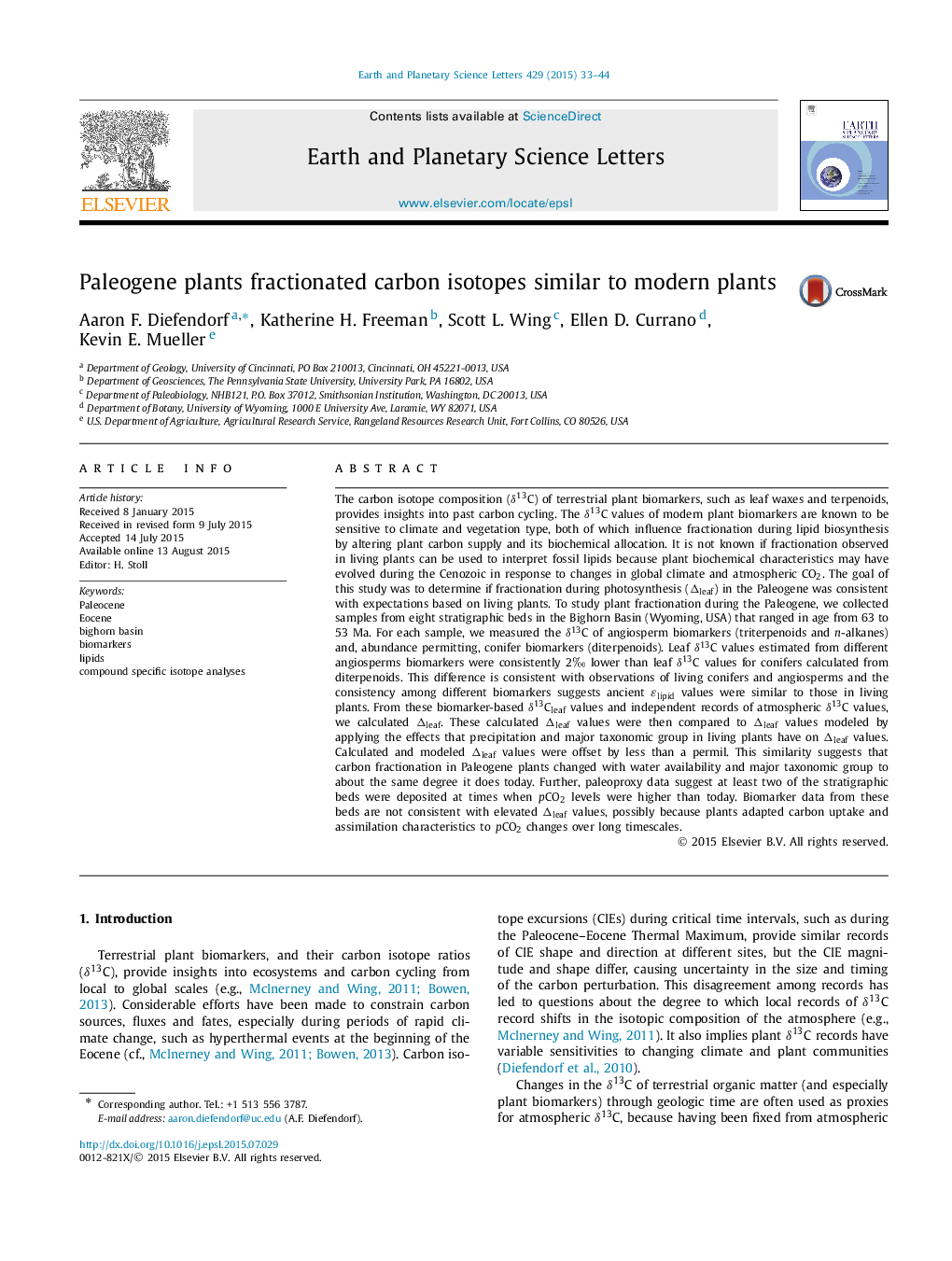| کد مقاله | کد نشریه | سال انتشار | مقاله انگلیسی | نسخه تمام متن |
|---|---|---|---|---|
| 6428178 | 1634727 | 2015 | 12 صفحه PDF | دانلود رایگان |
- C isotope composition (δ13C) of plant biomarkers was measured in Paleogene rocks.
- Plant biomarkers were used to estimate δ13C of Paleogene leaves (δ13Cleaf).
- Angiosperm paleo-δ13Cleaf was 2Ⱐlower than conifers, as observed for living plants.
- Paleogene Îleaf was derived from δ13Cleaf and δ13C of atmospheric CO2 from forams.
- Pale-Îleaf values were consistent with effects of water on living plant Îleaf.
The carbon isotope composition (δ13C) of terrestrial plant biomarkers, such as leaf waxes and terpenoids, provides insights into past carbon cycling. The δ13C values of modern plant biomarkers are known to be sensitive to climate and vegetation type, both of which influence fractionation during lipid biosynthesis by altering plant carbon supply and its biochemical allocation. It is not known if fractionation observed in living plants can be used to interpret fossil lipids because plant biochemical characteristics may have evolved during the Cenozoic in response to changes in global climate and atmospheric CO2. The goal of this study was to determine if fractionation during photosynthesis (Îleaf) in the Paleogene was consistent with expectations based on living plants. To study plant fractionation during the Paleogene, we collected samples from eight stratigraphic beds in the Bighorn Basin (Wyoming, USA) that ranged in age from 63 to 53 Ma. For each sample, we measured the δ13C of angiosperm biomarkers (triterpenoids and n-alkanes) and, abundance permitting, conifer biomarkers (diterpenoids). Leaf δ13C values estimated from different angiosperms biomarkers were consistently 2â° lower than leaf δ13C values for conifers calculated from diterpenoids. This difference is consistent with observations of living conifers and angiosperms and the consistency among different biomarkers suggests ancient εlipid values were similar to those in living plants. From these biomarker-based δ13Cleaf values and independent records of atmospheric δ13C values, we calculated Îleaf. These calculated Îleaf values were then compared to Îleaf values modeled by applying the effects that precipitation and major taxonomic group in living plants have on Îleaf values. Calculated and modeled Îleaf values were offset by less than a permil. This similarity suggests that carbon fractionation in Paleogene plants changed with water availability and major taxonomic group to about the same degree it does today. Further, paleoproxy data suggest at least two of the stratigraphic beds were deposited at times when pCO2 levels were higher than today. Biomarker data from these beds are not consistent with elevated Îleaf values, possibly because plants adapted carbon uptake and assimilation characteristics to pCO2 changes over long timescales.
Journal: Earth and Planetary Science Letters - Volume 429, 1 November 2015, Pages 33-44
